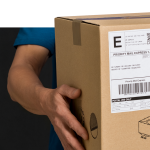Are ‘easy and free’ returns policies crushing fashion e-commerce?

Choice and convenience, characteristics that made e-commerce such an appealing novelty in its early days, are now taken for granted by customers.
READ NEXT

Takeaways from eCommerce Expo 2019
Consumers now are now faced with a feast of options online to unearth the best offers. For retailers, while they’ve never had a greater pool of prospective customers, they’ve never had more competition vying for those same shoppers.
As such, retailers are facing mounting pressure to offer express delivery, flexible payments, and free returns, in order to maintain a lead. All these value-add offerings cut into margins, making satisfying customer demands an increasingly expensive business.
Free returns are a double-edged sword for businesses
Return policies with free shipping fees and pickups may attract customers and maintain customer satisfaction, but they are costing retailers dearly.
That challenge is particularly rife within the fashion industry; Supply & Demand Chain Executive reported that return goods cost the UK fashion retailers £6.6 billion (US$8.1 billion) last year.
At eCommerce Expo last week, B-Stock’s EMEA Director, Ben Whitaker, said: “One UK department store is said to have claimed that any online order under the value of £30 is unprofitable.
“Now, consider that between 30 percent and 50 percent of items purchased online are returned: how do you even begin to recoup the loss? Taking control of your reverse logistics processes is one way to help.”
According to Whitaker, free returns policies are one of the factors that made online shopping so appealing to consumers from the start, but the hidden costs associated with these services are cutting into overhead costs.
Various factors such as the delivery of wrong goods, mismatch of product expectations and impulse purchase contribute to the high return rates.
However, the reality is with impulse purchase come impulse regrets, and customers can take full advantage of the return policy to return goods worn once or twice. The cost of these returns is often absorbed by retailers and the logistics of repackaging these goods to the shelves are costly.
“Trends such as wardrobing, fast fashion and the rise of online influencers have contributed to an increase in impulse purchases, which in turn feeds into a surge of return rates,” Whitaker said.
“When a large portion of customers are buying with the intention to immediately return some or all of the items, retailers need to utilize the available technology to provide a frictionless reverse supply chain that can get products back on shelves or through the liquidation process.”
Getting products ready to be sold again is a process that further cuts into profit margins; every time a product is touched there is an added cost, including administration, shipping, cleaning, packing, and storage.
Businesses need to adapt to the impact of social commerce
Businesses need to rethink their supply chain and make it easier to manage returns without too much cost or manpower.
Understanding how social commerce fuels impulse buy is a start. Customers are spoilt with choices and with easy return policies encourage returning goods. Businesses can work with customers by helping them combat the impulse to buy and return. That could include a better representation of how the product will look, such as Sephora, which allows customers to virtually ‘try on’ makeup with its AR app.
Businesses may also choose to tighten return policies to minimize the likelihood of goods being returned without compromising consumer rights. Asos employs such ideology by extending a return period of 28 days to 45 days. However, for goods returned after 28 days, customers are given vouchers instead.
Alternatively, analyses of returned goods can yield interesting insights and help e-commerce understand consumer behavior and needs.
For example, Topshop helps customers make more informed online purchases by allowing users to key in body measurements and provide size recommendations. Here, customers are supported when making a purchase and are more likely to be satisfied with the product when it arrives at the door.
Besides that, data on returned goods could help retailers understand the buying and returning patterns of consumers and plan strategic locations for warehouses. This helps to optimize investment in logistics and changing the supply chain to suit both business and customers.
Ultimately, facing a race to the bottom, retailers must weigh short-term competitiveness with long-term sustainability. Achieving the latter means being innovative with providing value beyond just free next day delivery and returns.









